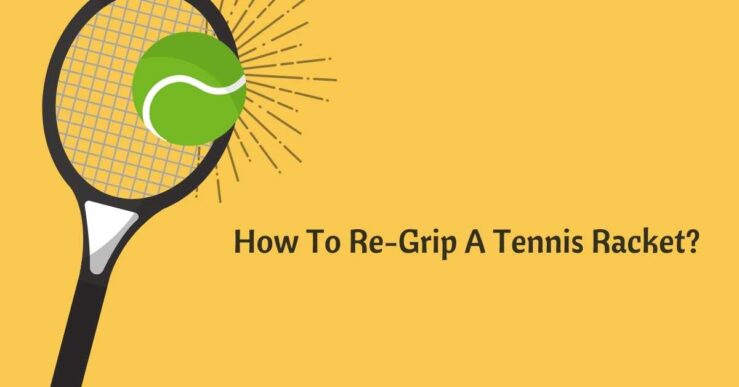Your grip on the racket handle has a significant impact on how you strike the tennis ball. But how to re-grip a tennis racket? You must be able to tell when the grip needs repairing or customizing whether you utilize the factory grip or add overgrip tape.
You have two options for changing the grip on your tennis racket: either replace the entire grip or add a racket overgrip on top of it. A tennis racket’s grip is a crucial component that enables you to hold and maneuver the racket. You will lose control and comfort when your racket’s base grip—the grip that originally came on the handle wears out.
Applying an overgrip is a good idea because replacing a base grip is challenging and expensive. Overgrips are placed on top of the original base grip to give the impression that the racket handle is brand new. When they become worn out, they are simply removed and changed out for a fresh overgrip.
How To Re-grip A Tennis Racket
The thrill of using a brand-new tennis racket cannot be matched. You feel more assured and can maintain a tighter hold while swinging and serving thanks to the new grip. Unfortunately, as you play, the grip will deteriorate and become less soft. A racket that once felt soft and cozy in your hands can easily turn slick and worn out.
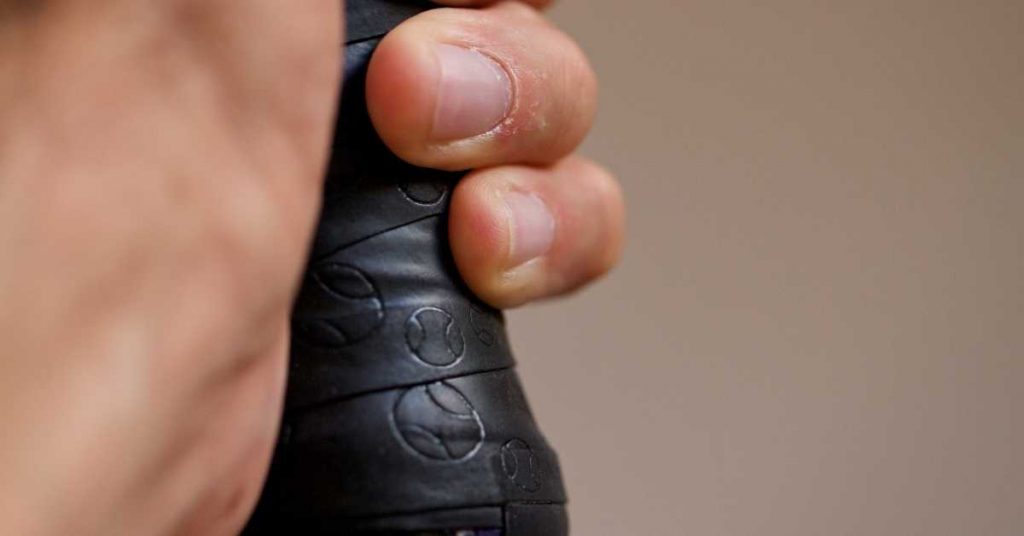
You should frequently change the grip on your tennis racket due to wear. Re-gripping your tennis racket guarantees that it is in the greatest possible condition, much as re-stringing a racket. A newly gripped tennis racket might provide you the competitive edge you need to improve your game if you play competitively or regularly in leagues.
Replacement Grips
All grip types on the handle must be removed in order to install replacement grips. If not, the replacement grip will be too large roughly double the size you need. It may occasionally be stapled on at the bottom, which could cause issues.
Generally, you don’t need to worry about replacing the staples, although you are welcome to do so if you prefer. Additionally, make sure to take off the sticky tape from the exterior of the grip so that you don’t end up with anything but the sticky tape on your handle.
When choosing replacement grips, it’s important to take into account differences in tackiness, thickness, and texture. Keep in mind that your racket’s replacement grip serves as your main line of defense against the harsh racket handle.
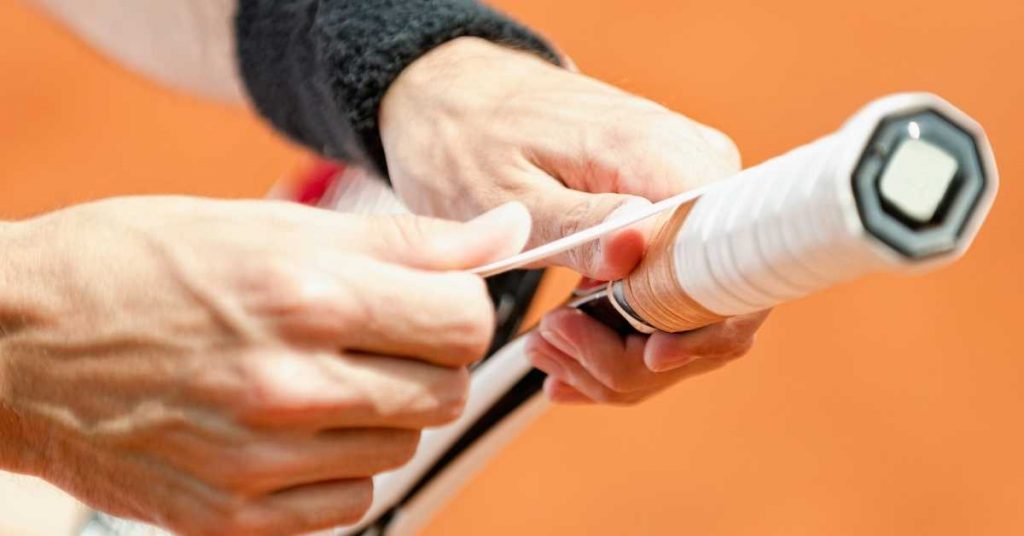
There will therefore be more padding between your hand and the handle of the racket if you have a softer, thicker grip. The “synthetic” materials used to create these more cushioned grips have a spongier feel in the hand.
Consider the texture of the replacement grip since it can affect the sensation if you are only using the replacement grip and not an overgrip on your racket. Consider a grip with a gel liner or additional padding if you don’t perspire as much yet want more convenience from your new grip.
Make sure you can still securely grip the racket because your grip will get a little thicker as a result. A new grip with less padding would be more appropriate for your needs if you are looking for a greater feel, which means you want to feel as close to the racket and ball as possible and don’t mind feeling the vibrations from the racket.

The majority of manufacturers include options for a “pro” synthetic grip or leather grip. You can feel the distinct bevels in the racket’s handle thanks to these thinner grips.
Learn How To Re-grip A Tennis Racket
It might be time for a replacement when your old grip tape has become excessively dusty, damaged, or lost its tackiness, anti-slip, or sponge properties. Additionally, you could wish to tighten your grip if it is too thin and the handle twists in your hand.
Every tennis player should understand how to re-grip their racket or change their overgrip because it is simple to do. Follow these steps to re-grip:
Eliminate your previous overgrip:
Slide off the tight rubber collar at the handle’s top to unwrap your old overgrip (the collar helps keep your overgrip from unwrapping). Unwrap the grip after removing the finishing tape (the small piece of tape holding the overgrip to it) with scissors or your nails.
Look for the tapering side:
Your new grip tape can be unfolded after you remove the plastic packaging. The overgrip should have a tapered edge on one end. Typically, there is a little, adhesive backing on the tapering side (depending on the brand). Take the backing off.
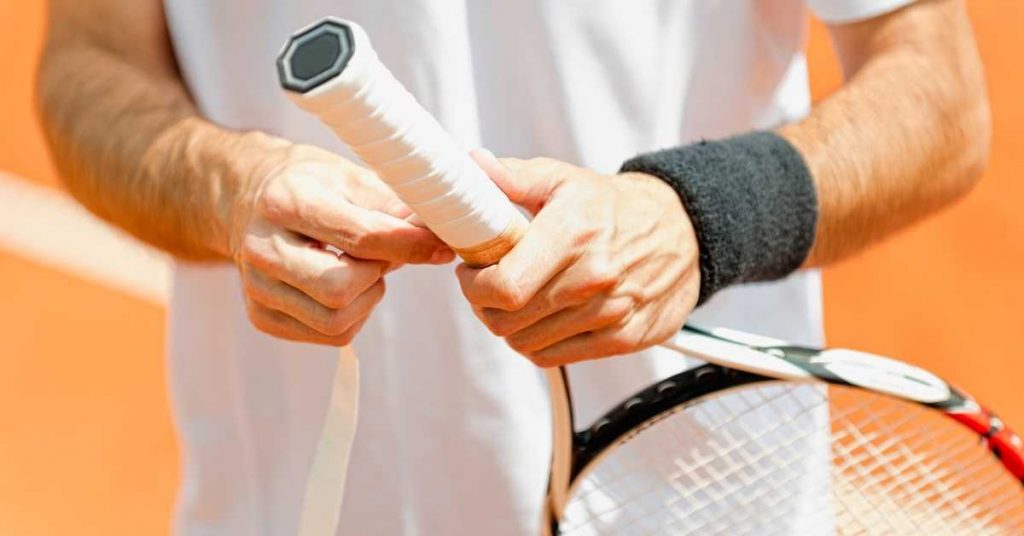
Observe the handle:
Numerous racket handles contain diagonal engravings that indicate which way the overgrip should be wrapped. However, how you wrap it ultimately depends on the type of overgrip you require for your playing style. For instance, don’t pull it too tight or wrap it around too many times if you want to slightly widen your handle. Your grasp gets thinner the tighter you wrap it. Select the overgrip that best fits your playing style.
Begin with the butte:
The tapered side of the overgrip should be inclined up on a small bevel as you begin wrapping from the bottom of your racket. Keep your overgrip from resting on your racket’s butt cap.
Fix the tape:
Wrap the overgrip as comfortably as you can. Snip off any extra as you reach the handle’s top, and then use the finishing tape to wrap the grip around the handle. Reposition the rubber collar so that it is encircling the handle’s top.
Read more about: Choosing a Tennis Racquet for Your Child
Replace The Grip On Tennis Racket
When changing your overgrip is insufficient, you may also need to replace your racket’s whole factory grip. The stock grip is typically constructed from synthetic fibers or leather, is thicker and more durable than a typical overgrip, and calls for a somewhat different application procedure. Check out the steps below for adjusting your racket grip:
Drop your previous hold:
Starting at the top of the handle, peel off the grip. The back of your default grip has glue to secure it to the handle. Carefully unwrap the grip, ensuring all the parts are lifted from the handle. Using a safe household cleaner or specialist product, remove any extra adhesive that is still present on the handle.
Get rid of the staple:
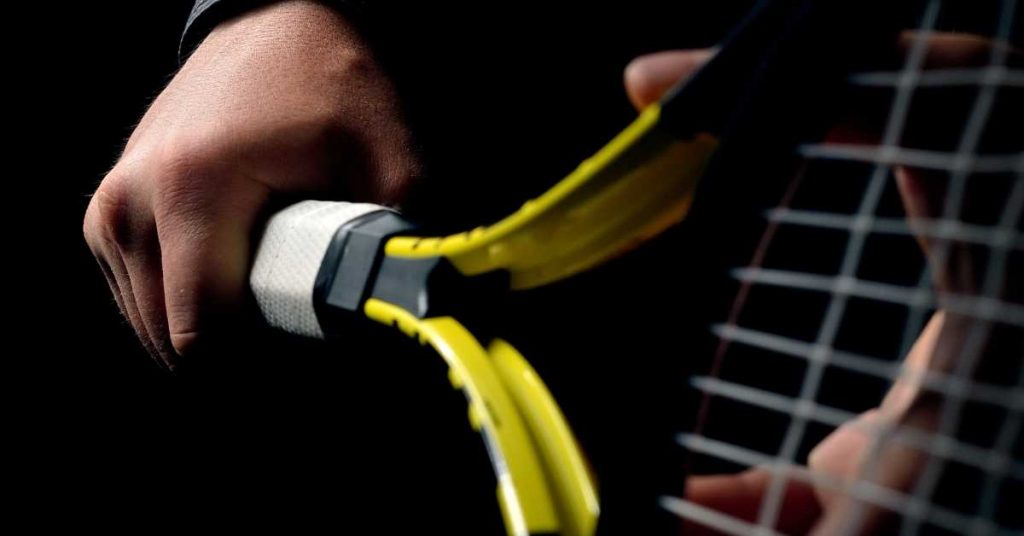
Your factory grip will be nailed to the butt after you get to the end of the handle. After completely releasing your hold, pull the staple from the handle using a pair of needle-nose pliers or a small screwdriver.
Slide the rubber band on:
It may be more difficult to slip on a rubber grip collar while the new grip is in place, so if you’re using one, slide it on after removing your previous grip.
Protect your racket:
To hold the handle firmly up and in position, flip the racket over and tuck the head between your thighs.
Put on the proper wrap:
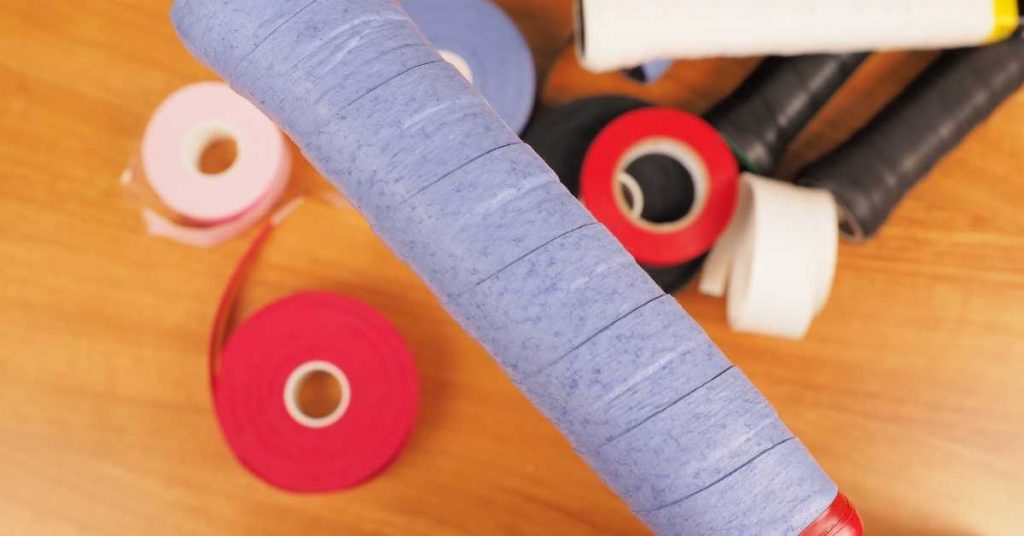
Align the tapered end of the new grip with the same level that the old grip was on. If you have a right hand, pull the tape to the right and then wrap. You will pull the tape to the left if you are a left-hander. The tapering end can be restapled if you have a stapler on hand.
Wrap it up properly:
Pull just firmly enough so that the replacement grip rests flat on the handle, wrapping around the handle about one-sixteenth of an inch each time. Continue wrapping the grip over the handle until you reach the top of it.
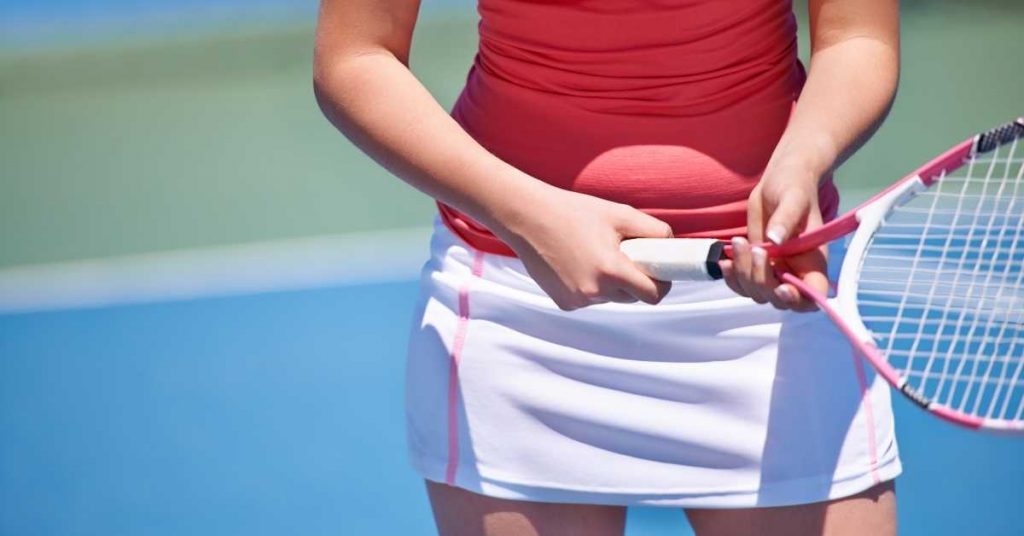
Cut off any surplus:
On the tape at the top of your handle, draw a line through it. Remove the tape. Cut along the line you drew with scissors.
Apply tape:
The finishing tape should be wrapped around the grip until it overlaps. If your new grip has a rubber collar, slide it down to hold it in place.
FAQ’S
Grip types include overgrips and replacement grips. A replacement grip has a sticky backing and provides adequate cushioning. It can be placed directly on the handle of a racquet. On the other hand, an overgrip is often much thinner and does not have a sticky backing.
Over time, all tennis strings will lose tension. As soon as they are removed from the stringing machine, they start to lose tension. Depending on the type of string, strings can lose about 10% of their tension in the first 24 hours after being strung, and this process continues as you use the racquet.
Typically, overgrips are good for 3 to 40 hours of play. If your hands sweat a lot, the overgrip may need to be replaced in as little as three to twenty-four hours of play.
